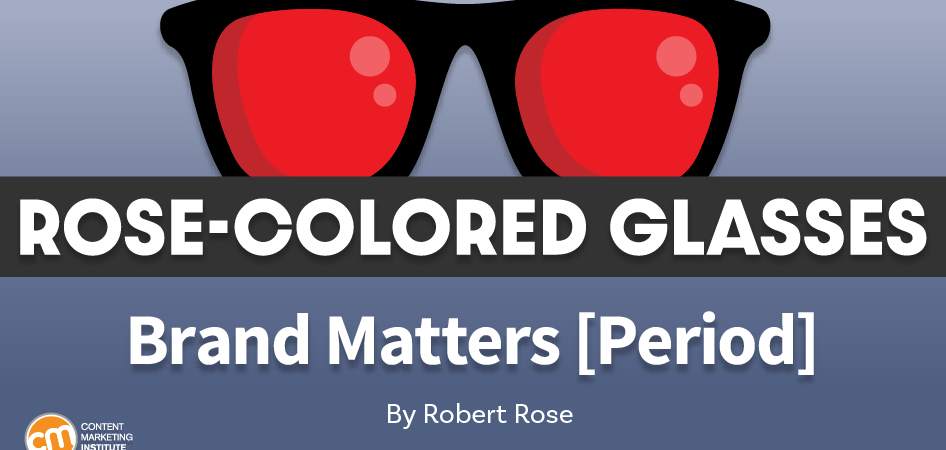
A long time ago (so long ago that Nickelback still had hits), my marketing leader would ask me what value my brand-building programs added to the business.
My answer to him was always the same: “Good things.”
Halfway through 2024, brands are desperate to make every piece of content catch their audiences’ attention. That’s no easy task in the “For you” feed era.
But chasing short-term attention and performance too often comes at the expense of the long game — building and deepening brand trust.
Brands often default to the short-term view because they understand the associated metrics (pageviews, click-throughs, comments, etc.). Associating performance measures with brand-building is much more challenging.
I see this all the time with my clients. There’s the nonprofit that desperately wants to measure its brand impact on stakeholders. There’s the AI startup trying to measure how its content affects its audience share with its competitors’ buzzword-filled treatises. There’s the enterprise brand trying to maintain its relevance in an evolving industry.
Yet, despite the measurement difficulty, brand awareness remains the most common content marketing goal mentioned in CMI’s B2B Content Marketing Benchmarks, Budgets, and Trends research year after year.
In that way, brand awareness is like exercise. We know it’s good for long-term health. But the incremental changes that result are hard to spot.
And that makes brand-building programs difficult to justify in a performance-driven culture.
Everything’s a vanity metric
When you think about it, aren’t brand awareness metrics “vanity metrics” by definition? After all, we’re asking the world, “How attractive do you think we are?”
Anyway.
It’s not that brand-marketing metrics don’t exist. Myriad articles, classes, best-practice guides, and tech products claim to help you associate transactional data with brand value.
Most of these encourage marketers to look at the growth of direct traffic, earned media coverage, social media share, or even brand-recall surveys to measure the increase of our brand value.
But here’s the problem: Anyone who has argued for more money for brand marketing (or content marketing as a lever to build a brand) will tell you those metrics won’t get you far.
And the pushback is warranted. More traffic doesn’t prove the brand has more unaided or aided recall. It could mean a content piece suddenly ranked well for an unbranded search term.
Here’s an example: About three years ago, I noticed a significant bump on my consulting website (contentadvisory.net). “Ooh, my brand is growing!” I thought.
But when I investigated, I found that most of that traffic went to an 8-year-old blog post that suddenly ranked for the phrase “purple duck meaning.”
I still don’t know why that phrase suddenly went viral, but people searching for it weren’t interested in whatever that blog post was about or my consulting services. (Google it at your own risk.)
So, more traffic doesn’t always indicate that brand value or trust has grown. The traffic could have everything to do with a topic but nothing to do with your brand. It also could mean people are scrutinizing your digital content because they don’t trust your brand.
Put simply, many of those vanity metrics may have nothing to do with increasing or decreasing the brand’s value. And, ironically, some may run counter to it.
But if transactional metrics aren’t optimal, how do you build a better business case for brand marketing?
Transactions are easy; triggers are hard
Before we get too far, I should note that there are plenty of ways to measure whether brand-building with content is working.
The key is to put an objective behind the effort, get stakeholders to agree on the measurable objective, and then design for testable measurability.
In other words, you need to measure your fitness level first, then get everyone to agree on your fitness assessment and how much change would equal “good progress.” Then, you can design an exercise plan to improve your fitness level.
For example, an enterprise financial services organization client wanted to increase brand trust among its existing investors and financial advisors. To measure the increase, we first conducted a trust survey to compare trust in that brand with trust in the brand’s competitors and mainstream news media outlets that covered financial services.
One year later, we conducted the same study again. This time, we surveyed the same kind of audience but added a segment of the brand’s customer base — subscribers to their blog and thought leadership platform.
The organization performed better than its competitors, so its branding efforts (such as TV, print, and online ads) worked. And the subscriber segment ranked my client’s brand as more trusted than some mainstream financial news sources.
“Hold on,” I hear you saying. “You proved that brand-building with content was working, but the question may still be, ‘So what? What value does that provide for the business? What happens as a result?’”
That’s when you answer, “Good things.”
You might still frustrate that CFO. But it’s a meaningful answer.
By spending some percentage of your effort working on the brand, you will build trust. And trust is bankable goodness that may express itself in many ways. You may not capture every granular transaction that comes from it, but good things will happen.
Think of it this way. Could you measure precisely how much running on the treadmill, taking your vitamins, or getting enough sleep contributed to your fitness improvement in any given week? Probably not.
But what happened after you decided to invest a portion of your overall effort in your long-term health? Good things.
You can easily measure more traffic, more votes, more engagement, and more downloads. Measuring transactions isn’t hard. But, measuring the trigger that motivated the transaction is complex.
Accept ‘good things’
People have spent their careers building business systems for consistency. They’re trained to laser-focus on eliminating operational conflicts and anything that hinders consistent, predictable, harmonious processes.
And many view measurability as a foundation for that predictability. The old saying, “If you can’t measure it, you can’t manage it,” comes from this thinking. This trope sometimes morphs into the idea that if you can’t measure it, it doesn’t count. And that’s nonsense.
I’ve learned over 32 years of marriage that doing good things for my wife provides good things in return. I could easily measure the transactions, but I don’t. How could I connect them to the value of the good things I get in return?
Think for a moment about the love you have for someone special in your life. Maybe it’s your partner, mom, dad, children, or even a dog. How much love is there? Have you measured it lately? If you can’t measure it, it doesn’t count, right?
Sometimes, the most accurate answer to the question of what comes from brand-building activities is simply: “Good things.”
Yes, more revenue, more savings, better customers, more trust, more brand equity, and more profitability. But you’re just not going to try and quantify it.
So, how much brand-building should you do?
My answer? Enough. Do enough, and good things will happen.
Updated from a May 2022 article.
HANDPICKED RELATED CONTENT:
Cover image by Joseph Kalinowski/Content Marketing Institute

